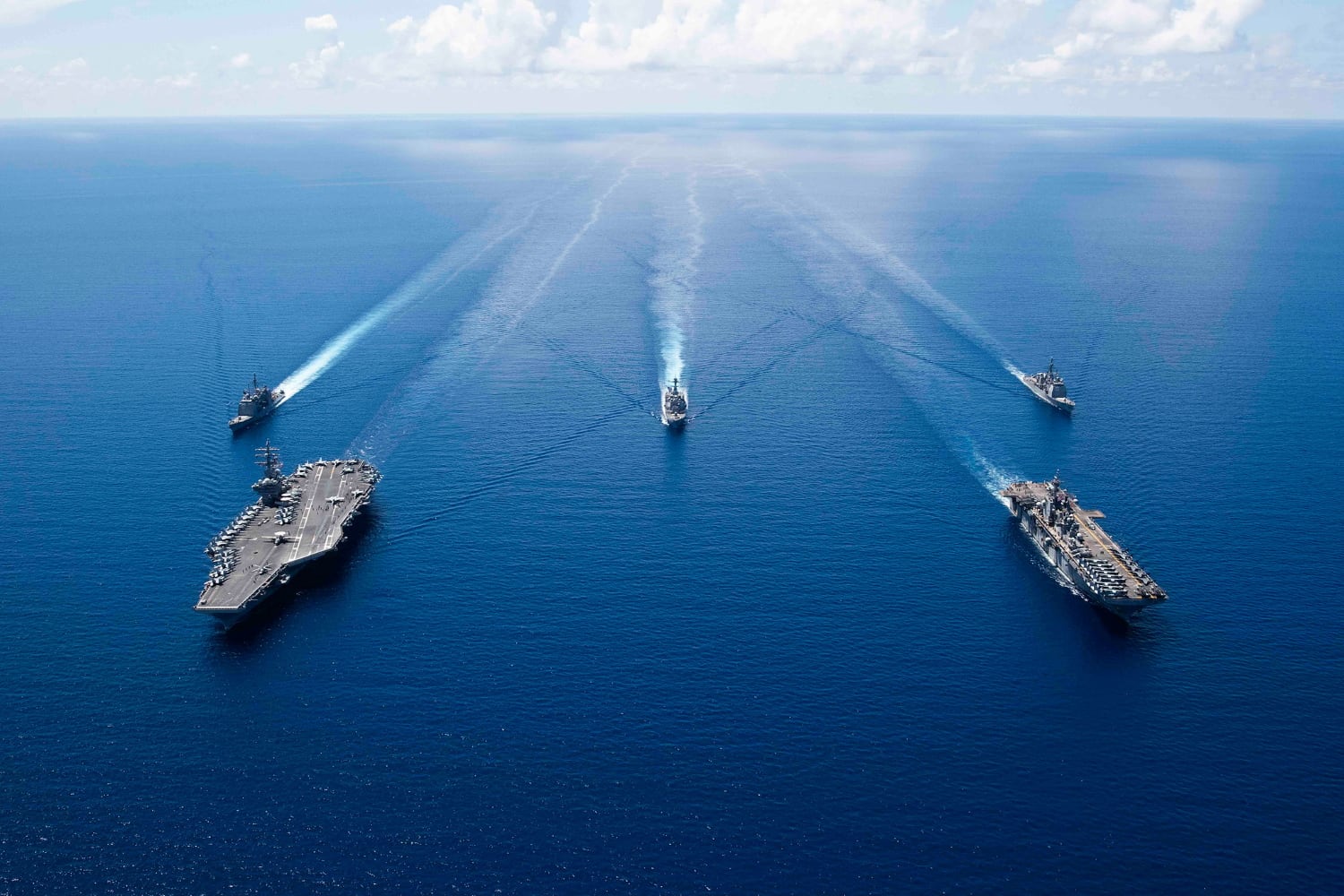WASHINGTON — The U.S. and Japan need to expand their collaboration on defense technologies in the future, with a specific focus on four technologies that can help counter the rise of China, according to a new report released Friday by the Atlantic Council.
The report also highlights the ongoing discussions about U.S. involvement in Japan’s next domestic fighter program as a high-stakes situation that could dictate industrial cooperation between the two nations for years.
“The most important component of cooperation on defense capabilities is direct coordination and collaboration on emerging technologies and capabilities,” write authors Tate Nurkin and Ryo Hinata-Yamaguchi, identifying unmanned systems, hypersonic/hyper-velocity missiles, and the defense applications of AI as three key areas where the U.S. and Japan need to start working together on.
RELATED

“These three areas are at the center of the intensifying U.S.-China military-technological competition. They are key to challenging or upholding military balances and stabilizing imbalances in and across key domain-area competitions — strike versus air and missile defense or undersea — on which regional and, over time, global security is at least partly based,” the authors note.
Specifically, the authors identify four project areas that both fit into U.S. strategy and Japan’s regional interests, while also matching industrial capabilities:
- Swarming technology and the loyal wingman: For several years the Pentagon has been investing R&D funding into the development of drones that can be slaved to a fighter jet, providing a “loyal wingman” controlled by the one pilot. Drone swarms are another area of heavy investment. Both concepts fit for Japan, whose Ministry of Defense expressed interest in both concepts going back as far as 2016.
- Unmanned underwater vehicles and anti-submarine warfare capabilities: China has invested heavily in submarines over the last decade, both manned and unmanned. The U.S. has also begun investing in UUV capabilities, but while Japan’s IHI has developed a domestic UUV, the MoD has yet to go all in on the capability. The authors note it is a logical area of collaboration.
- AI-enabled synthetic training environments: The U.S. and Japan ran a joint synthetic training exercise in 2016, but the authors would like to see development expanded in the future. “Given both countries’ need to accelerate training, their shared competency in machine learning and virtual and augmented reality, and a highly fractured simulation and training market, there is potential for a collaborative program to develop a synthetic simulation and training capability, to stress the specific operational contingencies to which US and Japanese forces will have to respond,” they write.
- Counter-unmanned systems: The entire world seems to be investing in weapons to counter unmanned systems, but the authors see a solid spot for the two nations to find workable technologies together. Japan’s acquisition group is currently testing a “high-power microwave generation system” for this mission.
That all sounds good on paper, the authors acknowledge, but there are very real challenges to increasing technology development between the two countries.
Japan’s modernization priorities are best viewed through a defensive lens, designed to protect the island nation. That’s a contrast to America’s posture in the region, which tends more towards force projection. In addition, Japan lags in military space and cyber operations compared to the U.S., making cross-domain collaboration challenging in several areas.
Those negotiations have also been impacted by “different perceptions of the nature of joint technology research,” the authors write. “U.S. defense officials have ‘emphasized operational concepts and capability requirements as the basis for collaboration,’ while Japanese officials have ‘continued to focus on technology development and industrial base interests.’”
Other challenges include Japan’s 1 percent-of-GDP cap on defense spending, as well as the state of Japan’s defense industry, which until 2014 was focused entirely on serving the Japanese government’s needs. Hence, the industry, while technically very competent, is also relatively small, with limited export experiences – and Tokyo has an interest in protecting that industry with favorable contracts.

Meanwhile, U.S. firms have concerns about “potentially losing revenue, transfer of sensitive technologies, and the potential replacement of US companies with Japanese ones in critical supply chains,” the authors write.
Some of those issues have come to the forefront in the ongoing discussions about what role American firms can play in Japan’s ongoing fighter development program. Japan recently rejected an offer by Lockheed Martin of a hybrid F-22/F-35 design, stating that “developing derivatives of existing fighters cannot be a candidate from the perspective of a Japan-led development.”
Getting the F-3 deal right will have long term implications for how the two nations develop capabilities together, the authors warn, quoting defense analyst Gregg Rubinstein in saying “Successfully defining a path to U.S.-Japanese collaboration on this program could make the F-3 an alliance-building centerpiece of cooperative defense acquisition” while failure to do so could “undermine prospects for future collaboration in defense capabilities development.”
Putting aside the internal issues, any collaboration between the U.S. and Japan has to be considered through the lens it will be see in Beijing and, to a lesser extent, Seoul.
“Even marginal differences in perception produce limits to the parameters of U.S.-Japan joint development of, and coordination on, military capabilities. Especially provocative programs like joint hypersonic-missile development will be viewed as escalatory, and will likely generate a response from China,Russia, and/or North Korea that could complicate other trade or geopolitical interests that go beyond Northeast Asia,” the authors warn, noting that China could attempt to exert more pressure on the ASEAN nations as a counterweight.
Additionally, South Korea would likely “see substantial U.S.-Japan collaboration not through an adversarial lens, but certainly through the lens of strained relations stemming from both historical and contextual issues, further complicating U.S.-Japan-Republic of Korea trilateral cooperation.”
Aaron Mehta was deputy editor and senior Pentagon correspondent for Defense News, covering policy, strategy and acquisition at the highest levels of the Defense Department and its international partners.








